This wonderful Cornish workshop and museum is dedicated to the legacy of studio pottery trailblazer Bernard Leach
Become an instant expert on…the tale of women artists and the Royal Academy
Become an instant expert on…the tale of women artists and the Royal Academy
16 Apr 2024
How was it that one of Britain’s august art institutions went from having two female artists among its founders to excluding women artists for centuries? Our expert, Dr Amy Lim, reveals the details of one of the most important chapters in the history of British women artists
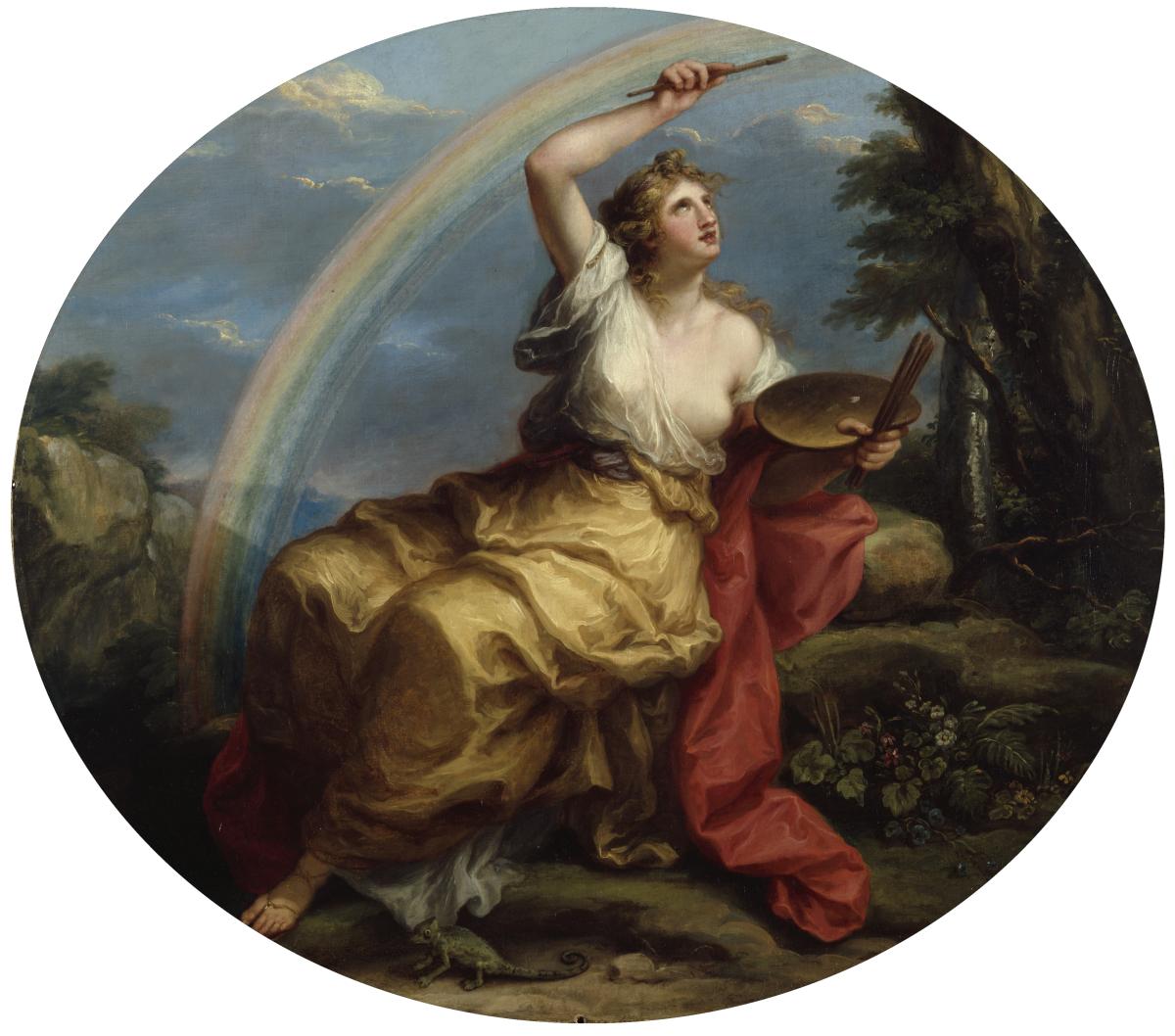
Angelica Kauffman RA, Colour, 1778–80. Image: Royal Academy of Arts, London
‘…let us strive to be among those women who shall first open the Academy’s doors to their fellow aspirants – that would be a noble mission, would it not?’
Eliza Fox (1824–1903), artist and teacher
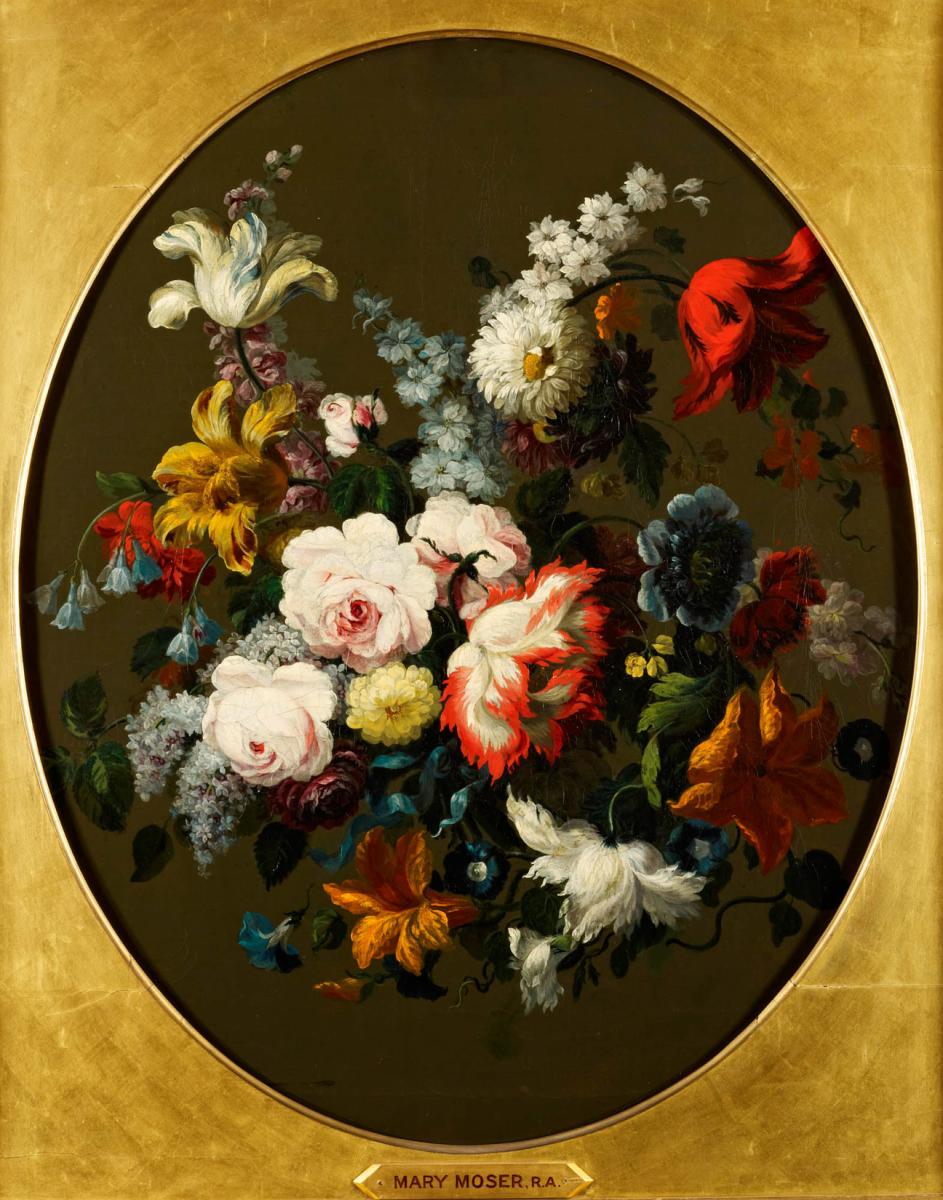 Mary Moser RA, A Bunch of Flowers (1792–97). Image: Royal Collection, Wikimedia Commons
Mary Moser RA, A Bunch of Flowers (1792–97). Image: Royal Collection, Wikimedia Commons
1. A male bastion
From its foundation in 1768 to the end of the 20th century, the Royal Academy of Arts dominated the British art world. For most of this time, women artists were wholly or partly excluded. They could submit their work to its exhibitions but were prevented from becoming members or training at its art school.
Their fight to be admitted is an important part of the story of women’s art.
Two of the Royal Academy’s 34 founder members were women: history and portrait painter Angelica Kauffman, and flower specialist Mary Moser, whose work you see above. Kauffman was even commissioned to paint the ‘Elements of Art’ for the Academy’s Council Room. But after both these artists died, in 1807 and 1819, no more women were elected.
Being an Academician (RA) or Associate (ARA) was an important boost to an artist’s career. It conferred status and meant they could command higher prices. The Summer Exhibition was an opportunity to impress the critics and find buyers. Although women could exhibit, the hanging committee usually gave the best spots to Academicians. Non-members’ paintings were often ‘skyed’ – hung high up, where they were difficult to see.
The Royal Academy Schools was also the most prestigious art school in Britain. It offered seven years of free tuition to anyone who passed the admissions test. But until 1860 its doors were closed to women. They were not expected to train as professional artists, although in reality many did.
Some men also argued that women lacked the necessary ‘genius’.
There was nothing in the Academy’s rules to prevent women being elected, or joining the Schools. But in practice none were.
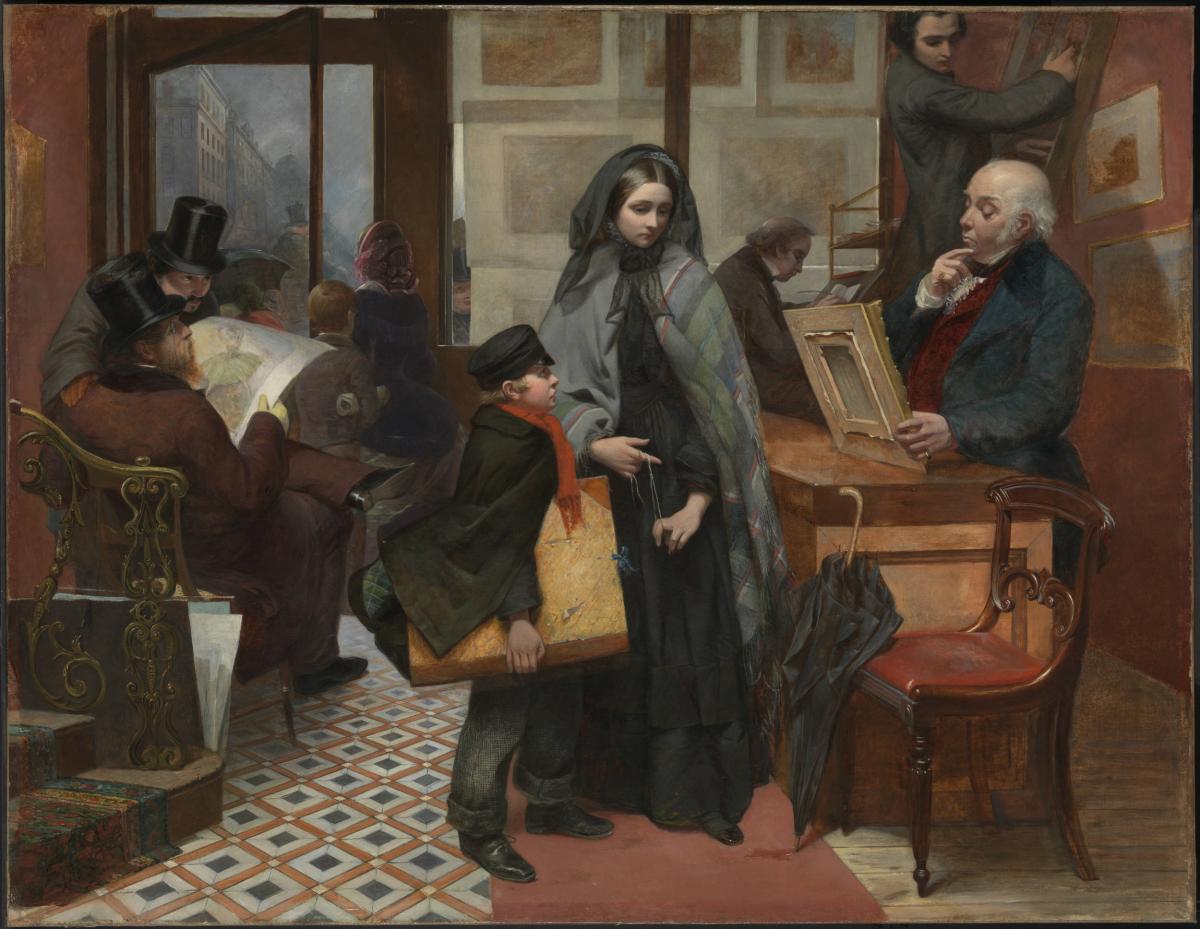 Emily Osborn’s Nameless and Friendless, 1857. Image: Tate
Emily Osborn’s Nameless and Friendless, 1857. Image: Tate
2. A foot in the door
In the 1850s early feminists, known as ‘strong-minded women’, began to campaign for more opportunities for women’s work.
Many of these campaigners were also artists, who used their art to argue their cause.
Emily Osborn’s Nameless and Friendless depicts a young, orphaned artist struggling to find a buyer for her painting. The lack of opportunities for training and exhibition meant it was especially difficult for women artists to make a living.
Frustrated and angry, a group of female artists began to campaign for entry to the Royal Academy Schools. In April 1859, they sent a letter to each of the 40 Academicians, reprinted in the Athenaeum journal. It was signed by 38 artists, including Osborn, feminist campaigner Barbara Leigh Smith Bodichon and art teacher Eliza Fox. The letter argued that ‘the difficulty and expense of obtaining good instruction oblige many women artists to enter upon their profession without adequate preparatory study’.
The council rejected their demand.
In 1860 Laura Herford, one of the signatories, gained admission by subterfuge.
Encouraged by the President of the Royal Academy, Sir Charles Eastlake, she submitted a successful application under the androgynous initials A L Herford. When her gender was revealed, the council could find no reason to prevent her taking up her place.
Three years later, the council backtracked by excluding women again, claiming there was not enough space for them. But after vigorous campaigning by women students in other art schools, they were readmitted from 1867.
Their foot was in the door.
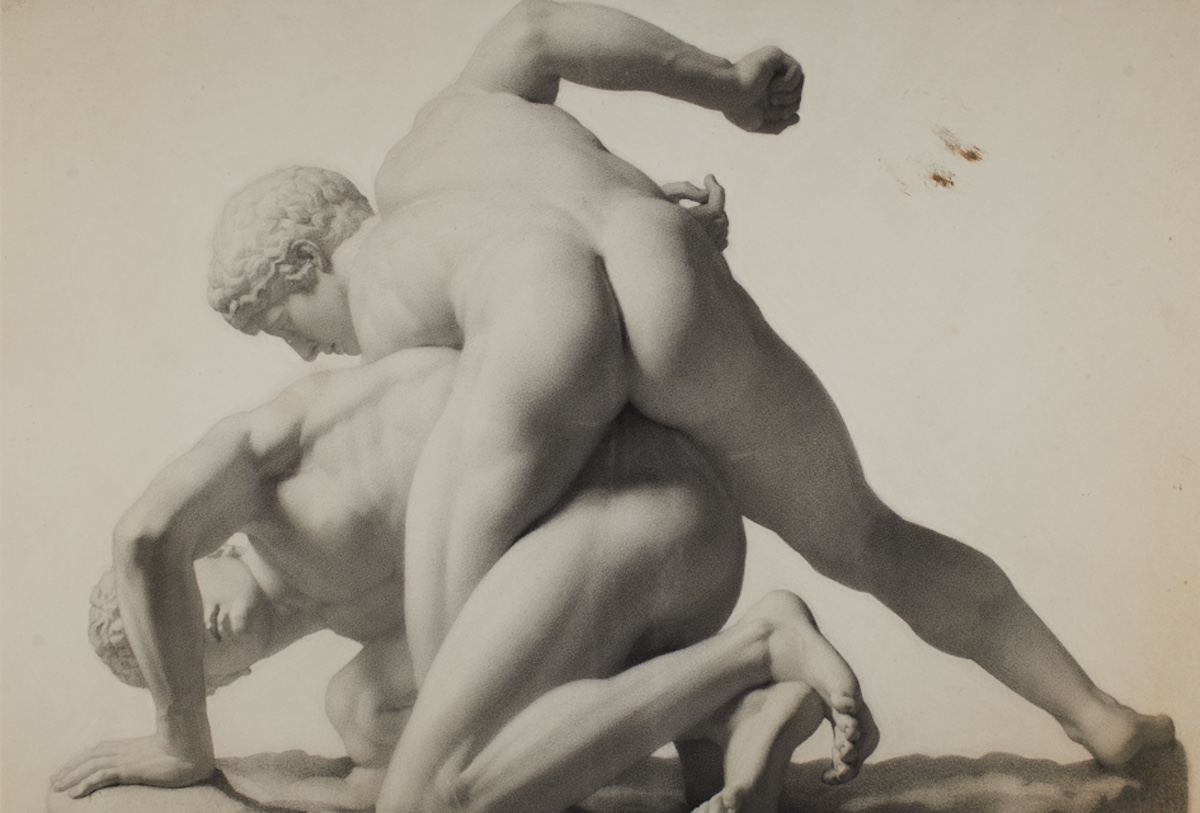 Minnie Jane Hardman’s Study of the Wrestlers, or Pancrastinae, c.1883. Image: University of Reading Art Collection
Minnie Jane Hardman’s Study of the Wrestlers, or Pancrastinae, c.1883. Image: University of Reading Art Collection
3. The Life School
Even when women were admitted to the RA Schools, they were not allowed to follow the full curriculum.
After two years drawing antique casts, men progressed to the Life School, where they drew nude models in a variety of poses. This was a crucial part of an artist’s education. It taught them the anatomy and skills to paint multifigure compositions. These were the paintings that critics and buyers prized the most.
Women were sent instead to the Ladies Painting School, where they drew fully dressed, mostly female models. Without nude models to learn from, they were confined to what were considered the ‘lower’ genres of landscape, portrait and still life.
In 1879 and 1883 women students petitioned to be allowed life-drawing classes. They pleaded that without them ‘we cannot hope to rise above mediocrity’, arguing that ‘almost all of us rely on the profession we have chosen as our future means of livelihood. Therefore a class which is considered so essential to the training success of male students must be equally so to us.’
Their petitions were rejected.
Enterprising women supplemented their studies with private life-drawing classes. Minnie Jane Hardman was a prize-winning student in the 1880s. She drew casts and clothed models in the RA Schools, and nude models in extracurricular classes that she had to pay for herself.
From 1893 women were allowed to attend segregated life classes. But the model still had to be wrapped in a voluminous, belted loincloth to protect everyone’s modesty.
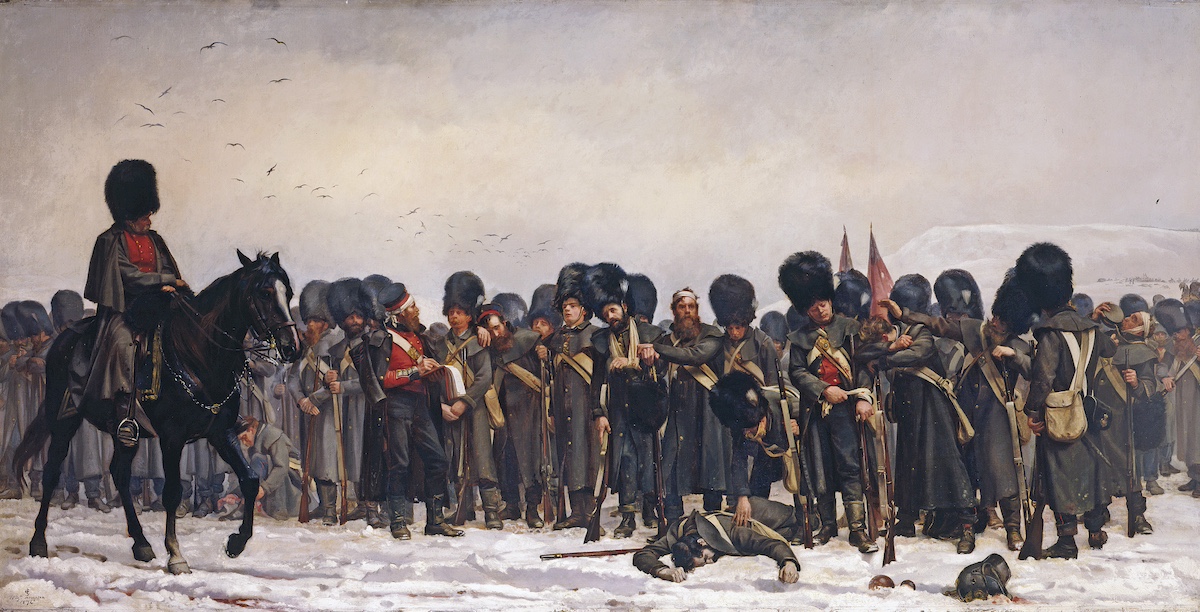
Elizabeth Butler’s The Roll Call, 1874. Image: Royal Collection Trust; Wikipedia
4. A narrow squeak
In the 1870s, one woman artist, Elizabeth Butler, narrowly missed out on election as an Associate of the Royal Academy.
Her Crimean War painting, The Roll Call, had caused a sensation at exhibition in 1874. It showed the stoic heroism of the ordinary soldier and struck a chord with all who saw it. The hanging committee were so impressed they greeted it with a round of huzzahs, and hung it ‘on the line’ (the best spot). On opening night Academicians flocked to offer Butler their congratulations; the Prince of Wales even singled the painting out for praise in his speech. When the exhibition opened to the public The Roll Call was so mobbed by crowds that a policeman had to be stationed nearby.
Butler went on to paint many more successful battle scenes, and in 1879 she was nominated for election as an Associate. There were two spots to fill, voted on by the all-male Academicians. The elections consisted of three rounds, with the top-ranking candidates progressing to the next stage.
Butler won the first round, with 10 votes to Hubert von Herkomer’s eight, and George Boughton’s seven. Realising that a woman might win, the Academicians transferred their votes to Boughton and Herkomer to keep Butler out.
This close call spread consternation through the Academy. ‘Faith, we have had a narrow squeak!’ was the verdict of one Academician. No woman would come as close for another 40 years.
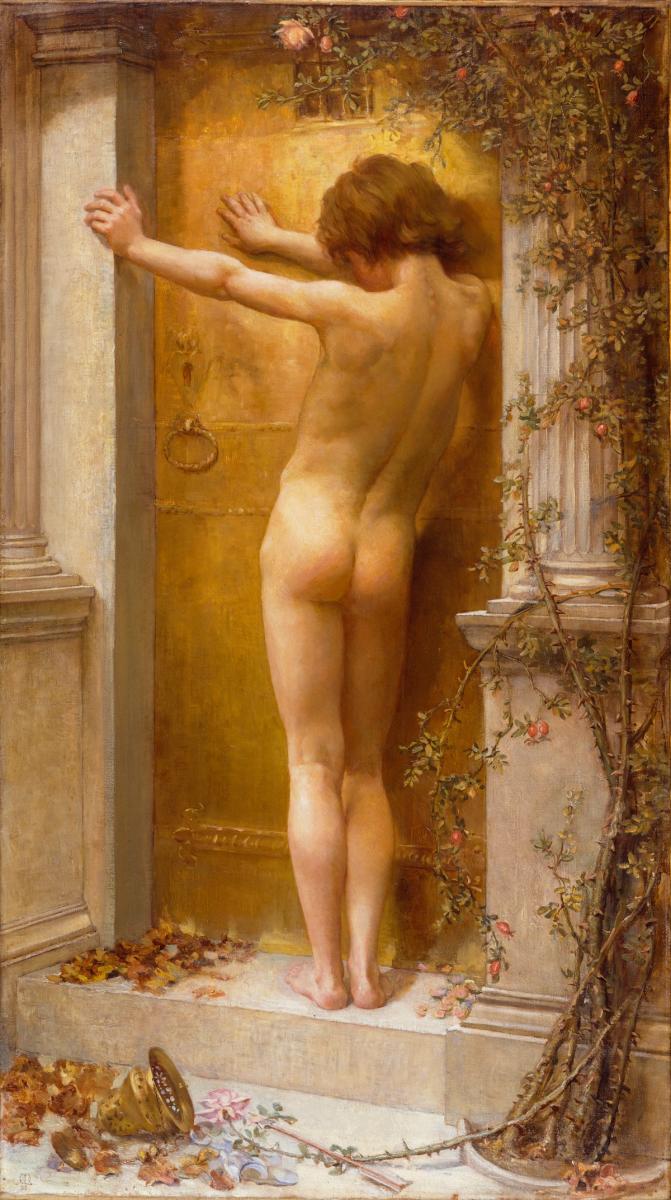 Love Locked Out by Anna Lea Merritt, 1890. Image: Presented by the Trustees of the Chantrey Bequest 1890, Tate; Wikimedia Commons
Love Locked Out by Anna Lea Merritt, 1890. Image: Presented by the Trustees of the Chantrey Bequest 1890, Tate; Wikimedia Commons
5. The doors open
In the last decades of the 19th century, the remaining gender barriers began to break down.
In 1890, Anna Lea Merritt’s Love Locked Out was the first painting by a woman to be acquired for the nation through the Chantrey Bequest. It was allocated to the Tate Gallery, so becoming the first work by a woman to enter its collection.
Other art schools and societies adopted progressive policies. From its foundation in 1871, the avant-garde Slade School of Art admitted men and women students on terms of near equality. In 1890 the Royal Watercolour Society elected Helen Allingham as its first full member.
The Royal Academy continued to hold out.
The success of the artist Lucy Kemp-Welch’s Colt Hunting in the New Forest in 1897 prompted renewed calls for women to be elected. As the Penny Illustrated Paper pointed out: ‘There is no logical reason why those honours should be reserved for men only. There ought to be no sex in Art, Literature, or Music.’
It would take another 12 decades for women to reach the last three milestones.
In 1922, Annie Swynnerton was elected an Associate, and in 1936 Laura Knight became the first female full Academician since Kauffman and Moser. Finally, in 2019, Rebecca Salter was elected as the first woman President of the Royal Academy of Arts. As Salter herself has said, ‘Do not tell young people they can’t do things.’
Amy’s top tips
Visit the exhibition Now You See Us: Women Artists in Britain, 1520–1920 at Tate Britain, 16 May–13 October 2024, or read more in the exhibition book
See Angelica Kauffman’s paintings at the Royal Academy of Arts, until 30 June 2024
Browse Minnie Jane Hardman’s drawings in the University of Reading Art Collections’ online exhibition
Become an Instant Expert on… the ‘forgotten’ artist Lucy Kemp-Welch
Read about pioneering women exhibitors in Paris A Spies-Gans’ A Revolution on Canvas: The Rise of Women Artists in Britain and France, 1760–1830 (Paul Mellon Centre for Studies in British Art, 2022)
Learn more about the challenges female artists faced in Victorian Women Artists by Pamela Gerrish Nunn (The Women’s Press, 1987)
Find out more about the fight for women’s art training in the Royal Academy blog
If you enjoyed this Instant Expert why not forward this on to a friend who you think would enjoy it too?
Show me another Instant Expert story – theartssociety.org/instant-expert
About the Author
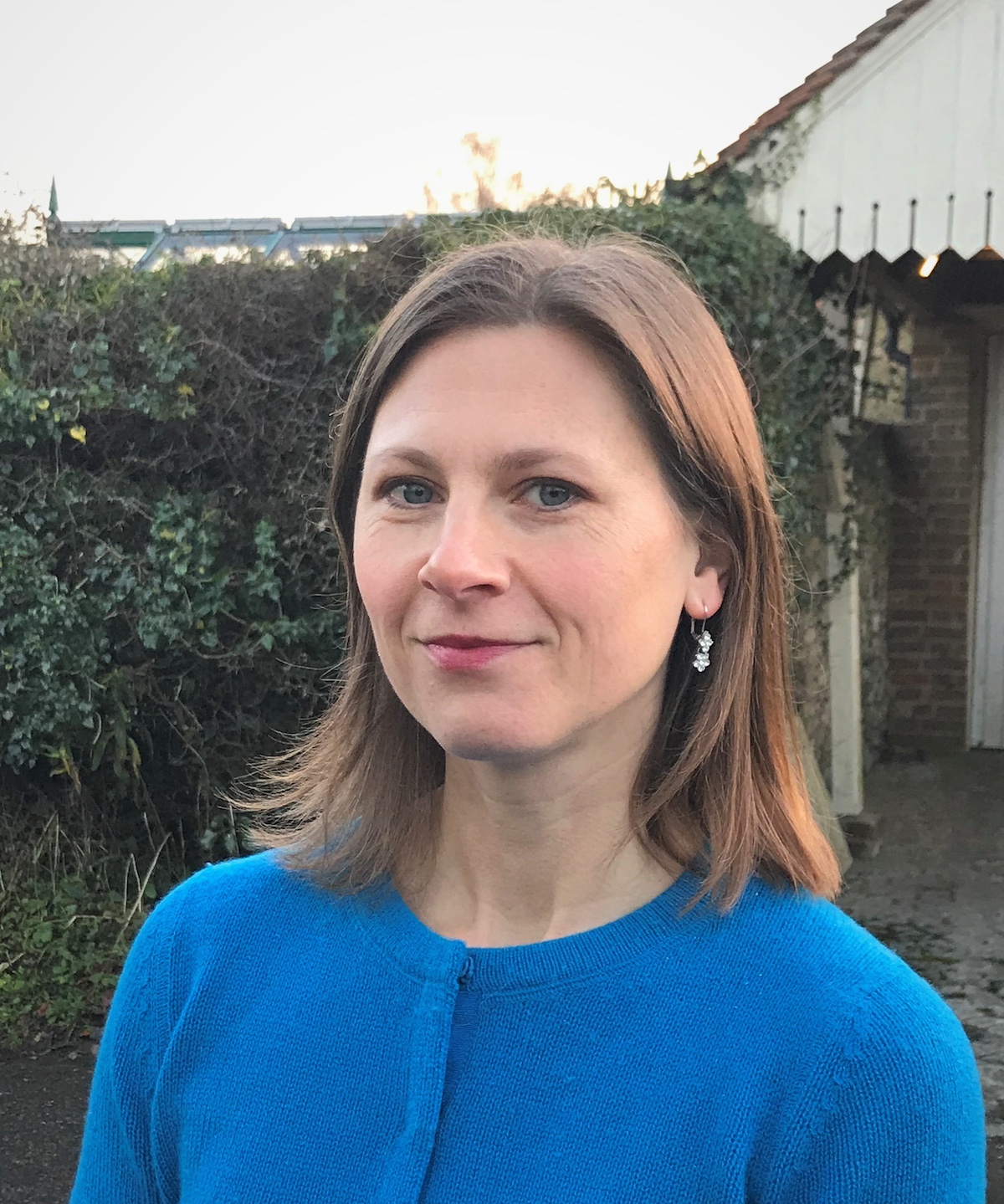
Dr Amy Lim
is an art historian and curator specialising in British fine and decorative arts from the 17th to 20th centuries. She was a researcher for the Victorian section of the Tate exhibition Now You See Us: Women Artists in Britain, 1520-1920. She is curator of the Faringdon Collection at Buscot Park, Oxfordshire and the Stanley Spencer Gallery, Cookham. She is also a tutor at the Oxford University Department for Continuing Education. Besides lecturing on women artists in Britain, Amy’s talks for The Arts Society include A Village Made in Heaven: Stanley Spencer’s Cookham, The Baroque Country House and Queens, consorts and courtiers: female art patrons in late Stuart England.
Article Tags
JOIN OUR MAILING LIST
Become an instant expert!
Find out more about the arts by becoming a Supporter of The Arts Society.
For just £20 a year you will receive invitations to exclusive member events and courses, special offers and concessions, our regular newsletter and our beautiful arts magazine, full of news, views, events and artist profiles.
FIND YOUR NEAREST SOCIETY
MORE FEATURES
Ever wanted to write a crime novel? As Britain’s annual crime writing festival opens, we uncover some top leads
It’s just 10 days until the Summer Olympic Games open in Paris. To mark the moment, Simon Inglis reveals how art and design play a key part in this, the world’s most spectacular multi-sport competition



